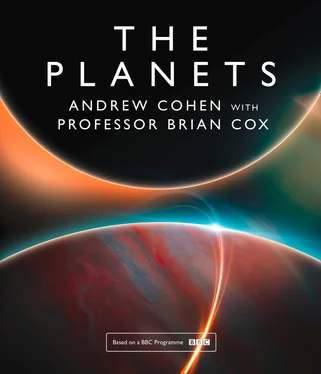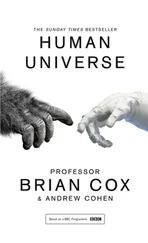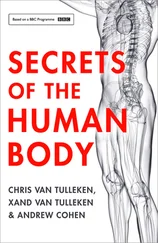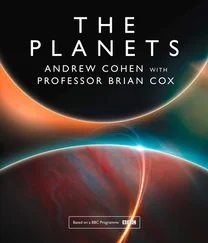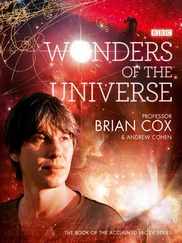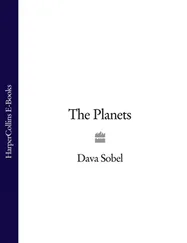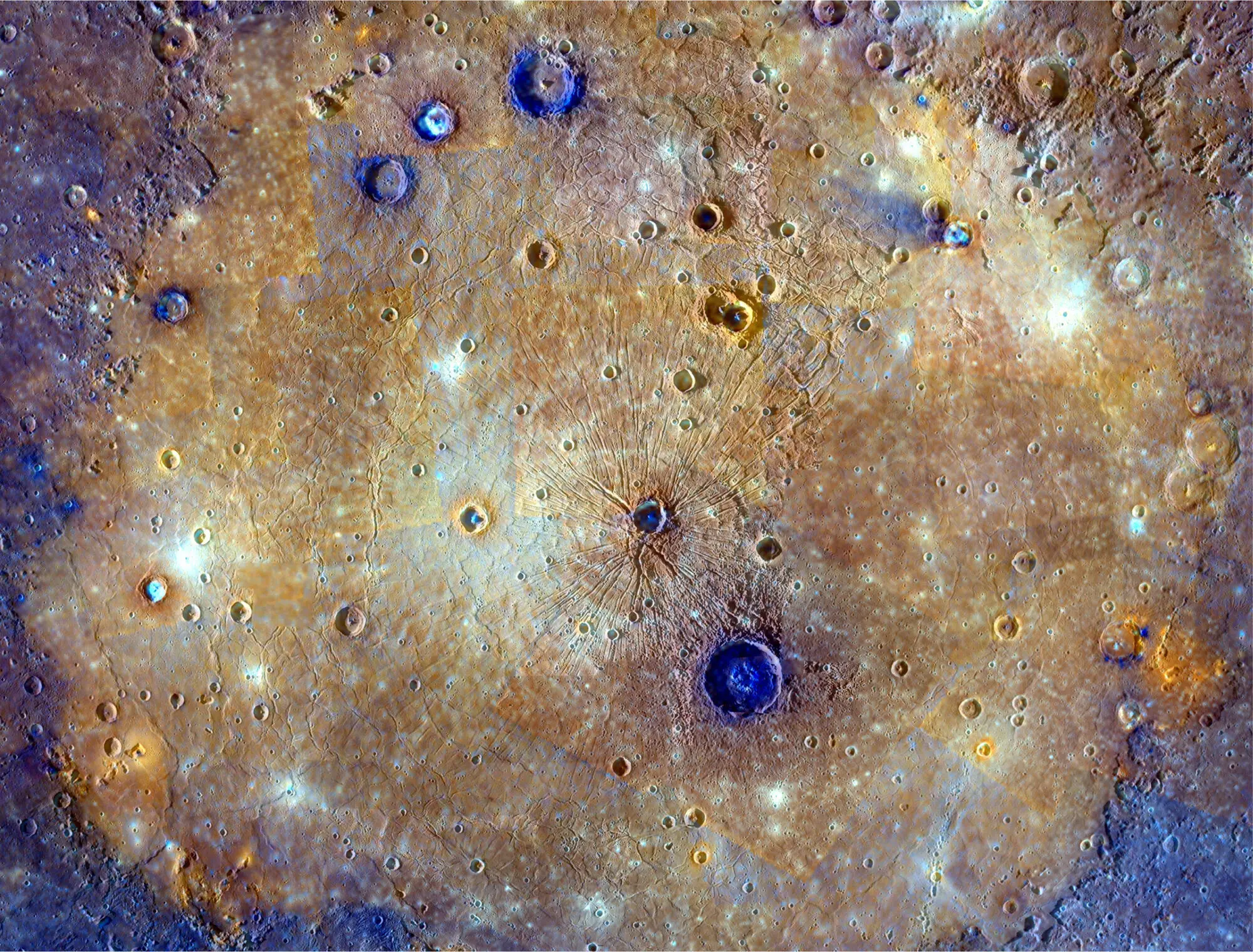
© NASA/Johns Hopkins University Applied Physics Laboratory/Carnegie Institution of Washington
This colour mosaic of Mercury’s Caloris basin was created using images taken by Messenger in 2014.
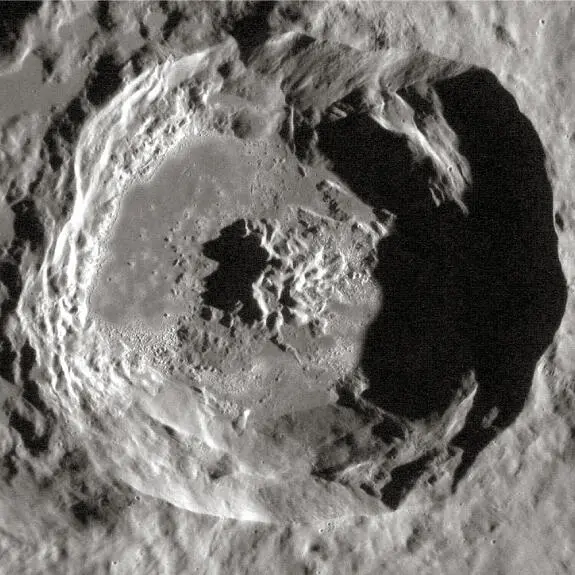
© NASA/Johns Hopkins University Applied Physics Laboratory/Carnegie Institution of Washington
Messenger photographed Mercury’s geology in great detail, capturing this crater within the vast Caloris basin.
On the other side of the mountains, the vast amount of material that was lifted from the planet’s surface at the moment of impact formed a series of concentric rings around the basin, stretching over 1,000 kilometres from its edge. The collision that created Caloris hit Mercury with such force that it also had more global consequences. Messenger photographed in great detail an area named (in the not particularly scientific vernacular) ‘the weird terrain’, a region at the planet’s diametrically opposite point, the antipode, to Caloris. This area of strange geological formations distinct from the rest of the surrounding terrain was likely created by the seismic shockwave of the Caloris impact reverberating through the whole of the planet.

© NASA/Johns Hopkins University Applied Physics Laboratory/Carnegie Institution of Washington
In this 3D view of Mercury’s north polar region, the areas marked in yellow show evidence of water ice.
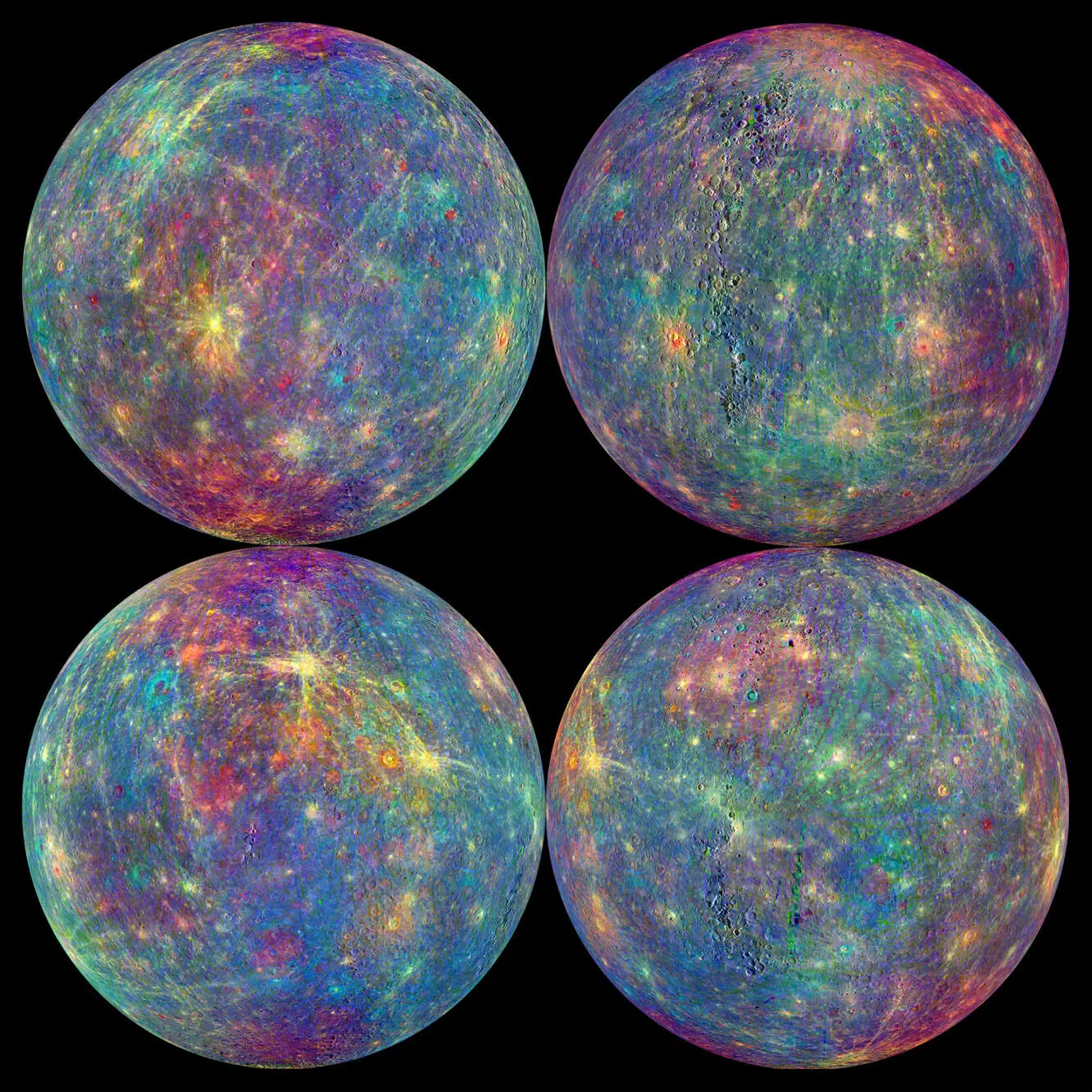
© NASA/Johns Hopkins University Applied Physics Laboratory/Carnegie Institution of Washington
The Mercury Atmosphere and Surface Composition Spectrometer (MASCS) instrument and the Mercury Dual Imaging System (MDIS) aboard Messenger enabled scientists to create these images, which use colours to map out the mineral, chemical and physical makeup of Mercury.
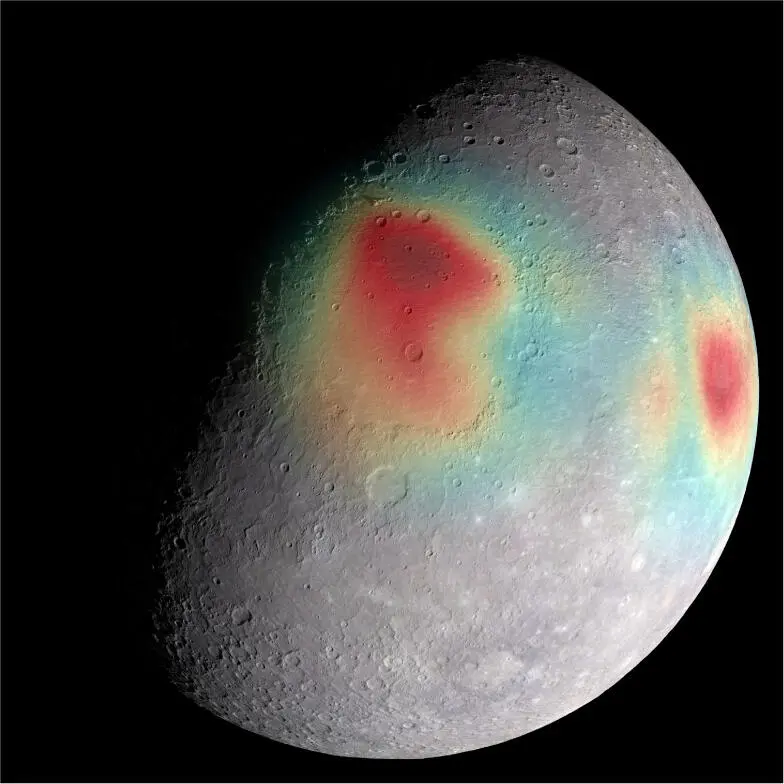
© NASA/Goddard Space Flight Center Science Visualization Studio/Johns Hopkins University Applied Physics Laboratory/Carnegie Institution of Washington
Radio tracking data sent by Messenger has enabled scientists to create maps of the gravity field of Mercury. In this image, Mercury’s gravity anomalies are depicted in colours: red indicates mass concentrations around the Caloris basin (centre) and the Sobkou region (right).
‘We couldn’t quite believe it, in fact we thought the data was wrong … we spent over two months looking at and double-checking the information but it was correct, Messenger had found a high level of volatiles such as sulphur, sodium and potassium on the surface.’
Nancy Chabot, planetary scientist, Messenger mission
Right up until the end of its mission in 2015, Messenger continued to uncover many of Mercury’s secrets, including a few very particular surprises. Using a combination of photography, spectroscopy and laser topography, Messenger revealed tantalising evidence that even this close to the Sun, water ice can exist on the surface of a planet. Even though the Sun blasts much of Mercury’s surface, the tilt of its rotational axis is almost zero, so there are craters and features around the planet’s poles that never see direct sunlight. Combined with the lack of atmosphere, these regions are forever exposed to the freezing temperatures of space, and it’s in this environment that Messenger was able to record the clear signature of water ice. Here, in the eternal night of a polar crater, it’s cold enough for ice to survive for millions of years, just metres away from the savage ferocity of the Sun’s light.
However, Messenger’s most startling discovery was still to come. The mission objectives had been developed to explore the deep history of Mercury and provide data to test against our theories of the formation and early life of the planet. Messenger was equipped with a collection of spectrometers designed to analyse the composition of Mercury at different depths. The Messenger team had worked on a detailed set of predictions outlining the chemistry of the planet, but as the spacecraft began to sniff at the Mercurian surface it soon became clear that our assumptions had not been quite right.
As the gamma-ray and X-ray spectrometers analysed the elements on Mercury’s surface they began to measure the unexpected characteristic signature of a number of elements such as phosphorus, potassium and sulphur at much higher levels than they were expecting. Up to this point, the working hypothesis had been that during the formation of Mercury (and all the rocky planets), as the rock condensed and combined to form the planet, the heavier elements like iron would sink towards the centre, forming the bulk of the core, while the lighter elements, such as phosphorus and sulphur, would remain near the surface. These more volatile elements would then be expected to be stripped away from the surface, particularly on a planet like Mercury, which is so close to the Sun. And yet the Messenger data confirmed high levels of potassium, and sulphur was detected at ten times the abundance of the element on Earth or the Moon. Both are volatile elements, easily vaporised, and when this close to the Sun, they simply should not have survived the planet’s birth.
On top of that, the Messenger data confirmed what we had long suspected about the structure of Mercury, that it is the densest of all the planets, with a massive iron core making up 75 per cent of the planet’s radius compared to just over 50 per cent here on Earth. The core creates a strange lopsided magnetic field, indicating that the internal dynamics of the planet are different to anything we have seen before.
All of this adds up to making Mercury something of a mystery, as nothing quite accords. The eccentric orbit, the abundance of volatile elements on the surface and the oversized iron core all point to the planet having a history far more complex than was first imagined, and the best explanation we have to make sense of the Messenger data is that Mercury was not born in its current sun-scorched position. It has long been supposedly known that the orbits of the planets are eternal, stable loops that sustain the structure of the Solar System in an endless rhythm, but everything we are learning now suggests that this is far from the whole story.
MEASURING MERCURY
Messenger was equipped with seven scientific instruments to collect data, including the Mercury Dual Imaging System (MDIS), Gamma-Ray and Neutron Spectrometer (GRNS), X-Ray Spectrometer (XRS), Magnetometer (MAG), Mercury Laser Altimeter (MLA), Mercury Atmospheric and Surface Composition Spectrometer (MASCS) and Energetic Particle and Plasma Spectrometer (EPPS). All these instruments communicated with the spacecraft through Data Processing Units (DPUs) and had to be mounted on the spacecraft with a view of Mercury but without interference from the Sun. They were designed to withstand the extreme temperatures the craft would encounter.

© NASA/Johns Hopkins University Applied Physics Laboratory/Carnegie Institution of Washington
Читать дальше
